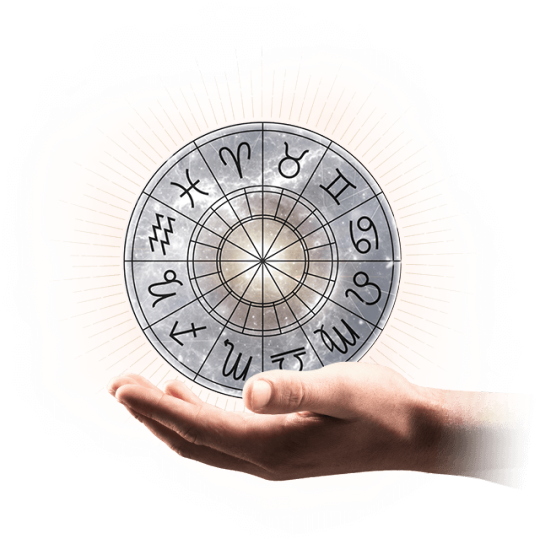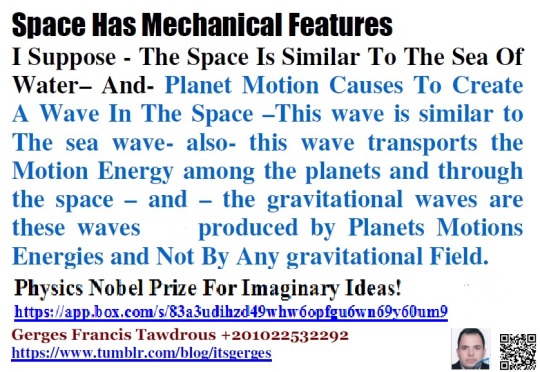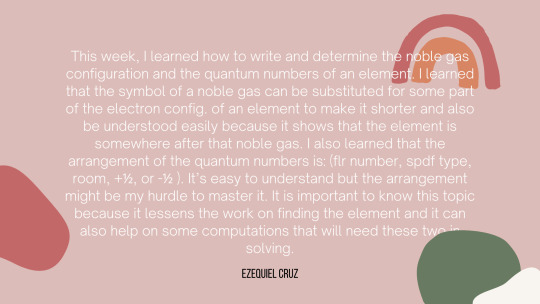#quantumnumbers
Explore tagged Tumblr posts
Text


20 notes
·
View notes
Text
What are the Types of Quantum Numbers?
Quantum numbers are a set of constant values. Quantum numbers, also known as electronic quantum numbers, are numerical values assigned to electrons that offer solutions to the Schrodinger wave equation for hydrogen atoms. The Schrodinger equation needs to be satisfied when combining together the quantum numbers of all the electrons in a particular atom. The collection of numbers can define the location, energy, and direction of an electron in an atom.
Types of Quantum Numbers
The four-quantum number completely characterizes or offers comprehensive information about an electron in an atom. The quantum numbers are:
The Principal Quantum Number (n)
Azimuthal Quantum Number (l)
Magnetic Quantum Number (ml)
Spin Quantum Number of Electrons (s)
Principal Quantum Number
The principal quantum numbers are represented by the sign ‘n’. They represent an atom’s primary electron shell. The larger the value of the primary quantum number, the greater the distance between the nucleus and the electrons, and therefore the atomic size.
The principal quantum number value can be any positive integer greater than or equal to one. The number n=1 signifies an atom’s innermost electron shell, which corresponds to the lowest energy state of an electron.
As an atom cannot have a negative value, the principal quantum number cannot have a negative value.
The value of the principal quantum number will be increased if an electron observes energy and jumps from one shell to a higher shell.
Also, when electrons lose energy, they return to lower shells, decreasing the value of n.
Absorption is the rise in the value of n for an electron that highlights the photons or energy absorbed. Similarly, the drop in the value of n for an electron is known as emission, and here is where the electrons emit their energy.
Azimuthal Quantum Number
The azimuthal quantum number describes the shape of an orbital (or orbital angular momentum). The letter ‘l’ represents it, and its value equals the total number of angular nodes in the orbital.
Azimuthal Quantum Number Formula and Explanation:
An azimuthal quantum number value can represent an s, p, d, or f subshell in many configurations.
Its value is determined (and restricted by) the value of the principal quantum number, which spans between 0 and 1. (n-1).
For example, if n = 3, the azimuthal quantum number can be one of three values: zero, one, or two.
The resultant subshell is an ‘s’ subshell when l is set to zero.
For l=1 and l=2, the resultant subshells are ‘p’ and ‘d,’ respectively.
As a result, the three feasible subshells for n=3 are 3s, 3p, and 3d. In another situation when n = 5, the available values of l are zero, one, two, three, and four. The atom has three angular nodes when l = 3.
Magnetic Quantum Number
The magnetic quantum number defines the overall number and orientation of orbitals in a subshell. It is denoted by the symbol ‘ml‘. This value indicates the orbital’s angular momentum projected along a specified axis. Let us understand the magnetic quantum number formula and detailed explanation:
The magnetic quantum number is determined by the azimuthal quantum number.
The value of ml for a given l lies between -l and +l. As a result, the value of n has an indirect effect on it.
If n = 4 and l = 3, the magnetic quantum number in an atom might be -3, -2, -1, 0, +1, +2, and +3. The orbital’s ‘l’ value determines the overall number of orbitals in a particular subshell.
The formula (2l + 1) is used to compute it. The ‘3d’ subshell (n=3, l=2), for example, has 5 orbitals (2*2 + 1). Each orbital may accommodate two electrons. As a consequence, the 3d subshell may hold a total of 10 electrons.
Electron Spin Quantum Number
The values of n, l, and ml have no effect on the electron spin quantum number. The value of this number, represented by the symbol ms, represents the spin direction of the electron.
The ms value tells which way the electron is spinning. The electron spin quantum number can range from +1/2 to -1/2.
A positive ms value indicates that the electron has an upward spin, often known as spin, up.
If ms is negative, the electron has a downward spin, often known as spin, down.
The quantum number of electron spin determines whether an atom can produce a magnetic field. The value of ms can be generalized to ±1/2.
Get our expert’s assistance in minimizing the details of the four distinct quantum numbers. Tutoroot offers skilled faculty who will provide you with online interactive classes along with in-depth information.
0 notes
Text

#scineceinn#cosmos#science#electrodynamics#quantumstate#quantumentanglement#quantumphysics#quantumnumber#quantummechanics#astronomy#astrophysics#astrolovers#cosmology#physics#theoreticalphysics#classicalphysics#physicslover#sciencelovers
2 notes
·
View notes
Link
CERN - Twice the #Charm, #Discovery of a new #exotic #Hadron containing two charm #Quarks and an up and a down #AntiQuark: https://home.cern/news/news/physics/twice-charm-long-lived-exotic-particle-discovered #CERN #Quark #ParticlePhysics #Physics #LHC #LargeHadronCollider #LHCb #Tetraquark #Mesons #Baryons #QuantumNumbers #QuantumPhysics
0 notes
Photo





WEEK7 #
#teamohohorange #genchem #reflection #quantumnumbers
0 notes
Text
QUANTUM numbers.
Quantum ? Di ba yan yung sa SM? HAHAH!
6 notes
·
View notes
Text

#scineceinn#cosmos#science#electrodynamics#quantumstate#quantumentanglement#quantumphysics#quantumnumber#quantummechanics#astronomy#astrophysics#astrolovers#cosmology#physics#theoreticalphysics#classicalphysics#physicslover#sciencelovers
2 notes
·
View notes
Text
What are the Types of Quantum Numbers?
Quantum numbers are a set of constant values. Quantum numbers, also known as electronic quantum numbers, are numerical values assigned to electrons that offer solutions to the Schrodinger wave equation for hydrogen atoms. The Schrodinger equation needs to be satisfied when combining together the quantum numbers of all the electrons in a particular atom. The collection of numbers can define the location, energy, and direction of an electron in an atom.
Types of Quantum Numbers
The four-quantum number completely characterizes or offers comprehensive information about an electron in an atom. The quantum numbers are:
The Principal Quantum Number (n)
Azimuthal Quantum Number (l)
Magnetic Quantum Number (ml)
Spin Quantum Number of Electrons (s)
Principal Quantum Number
The principal quantum numbers are represented by the sign ‘n’. They represent an atom’s primary electron shell. The larger the value of the primary quantum number, the greater the distance between the nucleus and the electrons, and therefore the atomic size.
The principal quantum number value can be any positive integer greater than or equal to one. The number n=1 signifies an atom’s innermost electron shell, which corresponds to the lowest energy state of an electron.
As an atom cannot have a negative value, the principal quantum number cannot have a negative value.
The value of the principal quantum number will be increased if an electron observes energy and jumps from one shell to a higher shell.
Also, when electrons lose energy, they return to lower shells, decreasing the value of n.
Absorption is the rise in the value of n for an electron that highlights the photons or energy absorbed. Similarly, the drop in the value of n for an electron is known as emission, and here is where the electrons emit their energy.
Azimuthal Quantum Number
The azimuthal quantum numbers describes the shape of an orbital (or orbital angular momentum). The letter ‘l’ represents it, and its value equals the total number of angular nodes in the orbital.
Azimuthal Quantum Number Formula and Explanation:
An azimuthal quantum number value can represent an s, p, d, or f subshell in many configurations.
Its value is determined (and restricted by) the value of the principal quantum number, which spans between 0 and 1. (n-1).
For example, if n = 3, the azimuthal quantum number can be one of three values: zero, one, or two.
The resultant subshell is an ‘s’ subshell when l is set to zero.
For l=1 and l=2, the resultant subshells are ‘p’ and ‘d,’ respectively.
As a result, the three feasible subshells for n=3 are 3s, 3p, and 3d. In another situation when n = 5, the available values of l are zero, one, two, three, and four. The atom has three angular nodes when l = 3.
Magnetic Quantum Number
The magnetic quantum number defines the overall number and orientation of orbitals in a subshell. It is denoted by the symbol ‘ml‘. This value indicates the orbital’s angular momentum projected along a specified axis. Let us understand the magnetic quantum number formula and detailed explanation:
The magnetic quantum number is determined by the azimuthal quantum number.
The value of ml for a given l lies between -l and +l. As a result, the value of n has an indirect effect on it.
If n = 4 and l = 3, the magnetic quantum number in an atom might be -3, -2, -1, 0, +1, +2, and +3. The orbital’s ‘l’ value determines the overall number of orbitals in a particular subshell.
The formula (2l + 1) is used to compute it. The ‘3d’ subshell (n=3, l=2), for example, has 5 orbitals (2*2 + 1). Each orbital may accommodate two electrons. As a consequence, the 3d subshell may hold a total of 10 electrons.
Electron Spin Quantum Number
The values of n, l, and ml have no effect on the electron spin quantum number. The value of this number, represented by the symbol ms, represents the spin direction of the electron.
The ms value tells which way the electron is spinning. The electron spin quantum number can range from +1/2 to -1/2.
A positive ms value indicates that the electron has an upward spin, often known as spin, up.
If ms is negative, the electron has a downward spin, often known as spin, down.
The quantum number of electron spin determines whether an atom can produce a magnetic field. The value of ms can be generalized to ±1/2.
Get our expert’s assistance in minimizing the details of the four distinct quantum numbers. Tutoroot offers skilled faculty who will provide you with online interactive classes along with in-depth information.
0 notes
Text
What are Quantum Numbers?
Quantum numbers are a set of constant values. Quantum numbers, or electronic quantum numbers, are numerical values assigned to electrons that offer solutions to the Schrodinger wave equation for hydrogen atoms. The Schrodinger equation must be satisfied when combining the quantum numbers of all electrons in a particular atom. The collection of numbers can define an electron's location, energy, and direction in an atom. Enroll now at oll now at Tutoroot.
0 notes
Text
What are the Types of Quantum Numbers?
Quantum numbers are a set of constant values. Quantum numbers, also known as electronic quantum numbers, are numerical values assigned to electrons that offer solutions to the Schrodinger wave equation for hydrogen atoms. The Schrodinger equation must be satisfied when combining the quantum numbers of all electrons in a particular atom. The collection of numbers can define the location, energy, and direction of an electron in an atom.
Types of Quantum Numbers
The four-quantum number completely characterizes or offers comprehensive information about an electron in an atom. The quantum numbers are:
The Principal Quantum Number (n)
Azimuthal Quantum Number (l)
Magnetic Quantum Number (ml)
Spin Quantum Number of Electrons (s)
Principal Quantum Number
The principal quantum numbers are represented by the sign ‘n’. They represent an atom’s primary electron shell. The larger the primary quantum number's value, the greater the distance between the nucleus and electrons, and thus the atomic size.
The principal quantum number value can be any positive integer greater than or equal to one. The number n=1 signifies an atom’s innermost electron shell, which corresponds to the lowest energy state of an electron.
As an atom cannot have a negative value, the principal quantum number cannot have a negative value.
The value of the principal quantum number will be increased if an electron observes energy and jumps from one shell to a higher shell.
Also, when electrons lose energy, they return to lower shells, decreasing the value of n.
Absorption is the rise in the value of n for an electron that highlights the photons or energy absorbed. Similarly, the drop in the value of n for an electron is known as emission, and here is where the electrons emit their energy.
Azimuthal Quantum Number
The azimuthal quantum number describes the shape of an orbital (or orbital angular momentum). The letter ‘l’ represents it, and its value equals the total number of angular nodes in the orbital.
Azimuthal Quantum Number Formula and Explanation:
An azimuthal quantum number value can represent an s, p, d, or f subshell in many configurations.
Its value is determined (and restricted by) the value of the principal quantum number, which spans between 0 and 1. (n-1).
For example, if n = 3, the azimuthal quantum number can be one of three values: zero, one, or two.
The resultant subshell is an ‘s’ subshell when l is set to zero.
For l=1 and l=2, the resultant subshells are ‘p’ and ‘d,’ respectively.
As a result, the three feasible subshells for n=3 are 3s, 3p, and 3d. In another situation when n = 5, the available values of l are zero, one, two, three, and four. The atom has three angular nodes when l = 3.
Magnetic Quantum Number
The magnetic quantum number defines the overall number and orientation of orbitals in a subshell. It is denoted by the symbol ‘ml‘. This value indicates the orbital’s angular momentum projected along a specified axis. Let us understand the magnetic quantum number formula and detailed explanation:
The magnetic quantum number is determined by the azimuthal quantum number.
The value of ml for a given l lies between -l and +l. As a result, the value of n has an indirect effect on it.
If n = 4 and l = 3, the magnetic quantum number in an atom might be -3, -2, -1, 0, +1, +2, and +3. The orbital’s ‘l’ value determines the overall number of orbitals in a particular subshell.
The formula (2l + 1) is used to compute it. The ‘3d’ subshell (n=3, l=2), for example, has 5 orbitals (2*2 + 1). Each orbital may accommodate two electrons. As a consequence, the 3d subshell may hold a total of 10 electrons.
Electron Spin Quantum Number
The values of n, l, and ml have no effect on the electron spin quantum number. The value of this number, represented by the symbol ms, represents the spin direction of the electron.
The ms value tells which way the electron is spinning. The electron spin quantum number can range from +1/2 to -1/2.
A positive ms value indicates that the electron has an upward spin, often known as spin, up.
If ms is negative, the electron has a downward spin, often known as spin, down.
The quantum number of electron spin determines whether an atom can produce a magnetic field. The value of ms can be generalized to ±1/2.
Get our expert’s assistance in minimizing the details of the four distinct quantum numbers. Tutoroot offers skilled faculty who will provide you with online interactive classes along with in-depth information.
0 notes
Text
What are the Types of Quantum Numbers?
Quantum numbers are a set of constant values. Quantum numbers, also known as electronic quantum numbers, are numerical values assigned to electrons that offer solutions to the Schrodinger wave equation for hydrogen atoms. The Schrodinger equation needs to be satisfied when combining together the quantum numbers of all the electrons in a particular atom. The collection of numbers can define the location, energy, and direction of an electron in an atom.
Types of Quantum Numbers
The four-quantum number completely characterizes or offers comprehensive information about an electron in an atom. The quantum numbers are:
The Principal Quantum Number (n)
Azimuthal Quantum Number (l)
Magnetic Quantum Number (ml)
Spin Quantum Number of Electrons (s)
Principal Quantum Number
The principal quantum numbers are represented by the sign ‘n’. They represent an atom’s primary electron shell. The larger the primary quantum number's value, the greater the distance between the nucleus and electrons, and thus the atomic size.
The principal quantum number value can be any positive integer greater than or equal to one. The number n=1 signifies an atom’s innermost electron shell, which corresponds to the lowest energy state of an electron.
As an atom cannot have a negative value, the principal quantum number cannot have a negative value.
The value of the principal quantum number will be increased if an electron observes energy and jumps from one shell to a higher shell.
Also, when electrons lose energy, they return to lower shells, decreasing the value of n.
Absorption is the rise in the value of n for an electron that highlights the photons or energy absorbed. Similarly, the drop in the value of n for an electron is known as emission, and here is where the electrons emit their energy.
Azimuthal Quantum Number
The azimuthal quantum number describes the shape of an orbital (or orbital angular momentum). The letter ‘l’ represents it, and its value equals the total number of angular nodes in the orbital.
Azimuthal Quantum Number Formula and Explanation:
An azimuthal quantum number value can represent an s, p, d, or f subshell in many configurations.
Its value is determined (and restricted by) the value of the principal quantum number, which spans between 0 and 1. (n-1).
For example, if n = 3, the azimuthal quantum number can be one of three values: zero, one, or two.
The resultant subshell is an ‘s’ subshell when l is set to zero.
For l=1 and l=2, the resultant subshells are ‘p’ and ‘d,’ respectively.
As a result, the three feasible subshells for n=3 are 3s, 3p, and 3d. In another situation when n = 5, the available values of l are zero, one, two, three, and four. The atom has three angular nodes when l = 3.
Magnetic Quantum Number
The magnetic quantum number defines the overall number and orientation of orbitals in a subshell. It is denoted by the symbol ‘ml‘. This value indicates the orbital’s angular momentum projected along a specified axis. Let us understand the magnetic quantum number formula and detailed explanation:
The magnetic quantum number is determined by the azimuthal quantum number.
The value of ml for a given l lies between -l and +l. As a result, the value of n has an indirect effect on it.
If n = 4 and l = 3, the magnetic quantum number in an atom might be -3, -2, -1, 0, +1, +2, and +3. The orbital’s ‘l’ value determines the overall number of orbitals in a particular subshell.
The formula (2l + 1) is used to compute it. The ‘3d’ subshell (n=3, l=2), for example, has 5 orbitals (2*2 + 1). Each orbital may accommodate two electrons. As a consequence, the 3d subshell may hold a total of 10 electrons.
Electron Spin Quantum Number
The values of n, l, and ml have no effect on the electron spin quantum number. The value of this number, represented by the symbol ms, represents the spin direction of the electron.
The ms value tells which way the electron is spinning. The electron spin quantum number can range from +1/2 to -1/2.
A positive ms value indicates that the electron has an upward spin, often known as spin, up.
If ms is negative, the electron has a downward spin, often known as spin, down.
The quantum number of electron spin determines whether an atom can produce a magnetic field. The value of ms can be generalized to ±1/2.
Significance of Quantum Numbers
Quantum numbers are crucial because they can be employed to determine an atom’s electron configuration and the location of its electrons. Quantum numbers govern the atomic radius and ionization energy of atoms, among other features.
Quantum numbers are fundamental to understanding the behavior of electrons within atoms. They describe the unique quantum state of an electron, helping to explain the arrangement of electrons in atoms and the chemical properties of elements. Here's the significance of each of the four quantum numbers:
1. Principal Quantum Number (n):
Significance:
The principal quantum number, denoted as [Equation]n, primarily indicates the size and energy level of an atomic orbital where an electron is likely to be found.
It determines the energy of the electron in a hydrogen-like atom. Higher values of [Equation]n correspond to electrons that are farther from the nucleus, meaning they have higher energy and are less tightly bound to the atom.
The principal quantum number is also associated with the number of electron shells. For instance, [Equation]n=1 corresponds to the first (innermost) shell, [Equation]n=2 to the second shell, and so on.
2. Azimuthal Quantum Number (l):
Significance:
The azimuthal quantum number, also known as the angular momentum quantum number or orbital quantum number, is denoted as [Equation]l.
It defines the shape of the orbital and, consequently, the subshell in which the electron resides. The value of [Equation]l ranges from 0 to [Equation]n−1 for a given [Equation]n.
Each value of [Equation]l corresponds to a specific type of subshell: [Equation]l=0 (s subshell), [Equation]l=1 (p subshell), [Equation]l=2 (d subshell), and [Equation]l=3 (f subshell).
The shape of the orbital influences the distribution of electron density around the nucleus, affecting the atom's bonding and properties.
3. Magnetic Quantum Number (m_l):
Significance:
The magnetic quantum number, denoted as [Equation]ml , describes the orientation of an orbital in space relative to an external magnetic field.
The value of [Equation]ml can range from [Equation]−l to [Equation]+l, including zero. For example, if [Equation]l=1, [Equation]ml can be [Equation]−1, [Equation]0, or [Equation]+1, corresponding to the three orientations of a p orbital.
This quantum number is crucial in determining how orbitals are arranged spatially, particularly in the presence of magnetic fields. It also plays a role in the splitting of spectral lines in the Zeeman effect.
4. Spin Quantum Number (m_s):
Significance:
The spin quantum number, denoted as [Equation]ms , represents the intrinsic angular momentum (or "spin") of an electron.
It can take one of two values: [Equation]+1/2 or [Equation]−1/2, indicating the two possible orientations of an electron's spin (often referred to as "spin-up" and "spin-down").
The concept of electron spin is essential for explaining the Pauli Exclusion Principle, which states that no two electrons in the same atom can have the same set of all four quantum numbers. This principle underlies the structure of the periodic table and the unique electronic configurations of elements.
Overall Significance of Quantum Numbers:
Atomic Structure: Quantum numbers provide a complete description of an electron's position and behavior within an atom, explaining the arrangement of electrons in atomic orbitals.
Chemical Properties: The distribution of electrons among orbitals, determined by quantum numbers, directly influences an element's chemical reactivity, bonding behavior, and placement in the periodic table.
Spectroscopy: Quantum numbers are crucial in understanding atomic spectra, as transitions between quantum states (defined by quantum numbers) result in the emission or absorption of light at specific wavelengths.
Get our expert’s assistance in minimizing the details of the four distinct quantum numbers. Tutoroot offers skilled faculty who will provide you with online interactive classes along with in-depth information.
0 notes